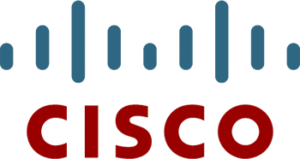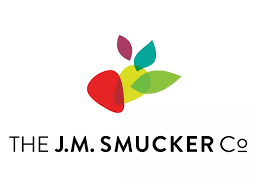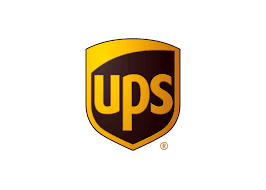Cloud Cloud Development
We provide top-to-bottom services to get your applications migrated to the Cloud, re-architected to the Cloud, and secured in the Cloud. We also provide native Cloud application development that makes application releases and upgrades simple.
Why Build Your Applications to be Cloud Native?
There are clear advantages to moving an application to the Cloud. But to get the most of your Cloud architecture, your existing applications likely need to be refactored to take advantage of Cloud-native functionality.
Containers, microservices, continuous testing, automated deployments, autoscaling, load balancing, source control, disaster recovery… the intrinsic functionality provided by modern Cloud platforms is stunning in both its breadth and depth.
Winmill can help you to redesign and refactor your existing applications to take advantage of all that the Cloud has to offer.
Native Cloud Application Benefits
Running and developing your applications in the Cloud gives you more than a competitive advantage. Here are some critical benefits:
Cost Savings
Scalability
Disaster Recovery and Business Continuity
Performance
Easy Deployment
Cost Savings
Project startup costs are lower. Development time is quicker. Deployments are faster. Application maintenance and upgrades cost less.
Scalability
Application development in an on-premises environment requires a lot of overhead for project planning and project setup, including selecting hardware and OS platforms, creating and administering databases, and ensuring application high availability.
Cloud application development eliminates that overhead because it is scalable. If you need more servers, database flexibility, or even CPU power, you can get that dynamically.
Cloud application development eliminates that overhead because it is scalable. If you need more servers, database flexibility, or even CPU power, you can get that dynamically.
Disaster Recovery and Business Continuity
A good disaster recovery and business continuity plan is very difficult to implement in an on-premises environment; it is also extraordinarily expensive (redundant servers, onsite backups, offsite backups, etc.).
In the Cloud, however, redundancy is inherently part of the system architecture. If one server fails, another picks up seamlessly. Access to your applications is never interrupted. This is a disaster recovery strategy that you can count on.
Performance
There are multiple performance benefits to deploying in the Cloud. First, it is easy to dynamically add resources, including CPU, memory, disk space and servers.
Second, in a Cloud-native serverless architecture, an application can automatically scale to support unlimited demand; microservices are deployed as needed, where needed, and then shut down as demand wanes.
Finally, Cloud providers like Amazon, Microsoft and Google have data centers around the world that optimize the hosting of your company’s applications, thus ensuring that users fromNew York to San Francisco to Munich toSeoul all experience the same excellent performance.
Easy Deployment
Deploying applications in an on-premises environment involves a lot of moving parts. That can make deployments clunky, slow, and error-prone.
Deploying applications in the Cloud is seamless and fast. The Cloud lets you automate the application deployment process including pipelines, builds, tests, and security scans. It also lets you deploy applications in your production environment with no downtime for your customers.
Cost Savings
Project startup costs are lower. Development time is quicker. Deployments are faster. Application maintenance and upgrades cost less.
Scalability
Application development in an on-premises environment requires a lot of overhead for project planning and project setup, including selecting hardware and OS platforms, creating and administering databases, and ensuring application high availability.
Cloud application development eliminates that overhead because it is scalable. If you need more servers, database flexibility, or even CPU power, you can get that dynamically.
Cloud application development eliminates that overhead because it is scalable. If you need more servers, database flexibility, or even CPU power, you can get that dynamically.
Disaster Recovery and Business Continuity
A good disaster recovery and business continuity plan is very difficult to implement in an on-premises environment; it is also extraordinarily expensive (redundant servers, onsite backups, offsite backups, etc.).
In the Cloud, however, redundancy is inherently part of the system architecture. If one server fails, another picks up seamlessly. Access to your applications is never interrupted. This is a disaster recovery strategy that you can count on.
Performance
There are multiple performance benefits to deploying in the Cloud. First, it is easy to dynamically add resources, including CPU, memory, disk space and servers.
Second, in a Cloud-native serverless architecture, an application can automatically scale to support unlimited demand; microservices are deployed as needed, where needed, and then shut down as demand wanes.
Finally, Cloud providers like Amazon, Microsoft and Google have data centers around the world that optimize the hosting of your company’s applications, thus ensuring that users fromNew York to San Francisco to Munich toSeoul all experience the same excellent performance.
Easy Deployment
Deploying applications in an on-premises environment involves a lot of moving parts. That can make deployments clunky, slow, and error-prone.
Deploying applications in the Cloud is seamless and fast. The Cloud lets you automate the application deployment process including pipelines, builds, tests, and security scans. It also lets you deploy applications in your production environment with no downtime for your customers.
Winmill Cloud DevOps
Migration
Cloud Migration: Winmill can help you efficiently migrate your applications, data, workloads, and resources from legacy on-premise servers (or datacenter) to the Cloud “as-is.”
Transformation
Microservices Architecture: Transforming a legacy application to be “Cloud Native” can be challenging. Winmill uses a common-sense approach appreciated by our clients.
Built Native
Code Development Lifecycle: Learning to develop natively for the Cloud can be difficult. Winmill has deep, real-world experience developing robust and secure native Cloud applications.
DevOps Strategy
DevOps Audit: We evaluate the design and operational effectiveness of your applications, including Cost, DevOps strategy, Disaster Recovery/Business Continuity, and Security.
Read More
Moving Your Applications to the Cloud (Cloud Migration)
Every organization has its unique challenges when planning a move to the cloud. How rapidly can we release high quality code? How can we make it secure and compliant? How can we leverage the cloud without sacrificing all we have built so far? How can we make this move in an orderly manner without impacting our current business?
We can help you navigate these waters successfully. We can help you to migrate your applications to the Cloud. Put simply, this means we move your applications, data, workloads, and resources from legacy on-premise (or datacenter) servers to AWS, Azure, or Google Cloud. We don’t redesign or rebuild the application; it is effectively moved “as-is” to the Cloud.
The Cloud infrastructure lets you take advantage of almost unlimited computer resources. It also eliminates the need for you to have on-site servers that need to be maintained, upgraded, and replaced at regular intervals. This reduces your overhead because you don’t have to continually invest in existing or new equipment. It also lets you maximize your IT staff resources.
Transforming Your Applications to Run in the Cloud
It’s one thing to migrate an existing application “as-is” to the Cloud; it’s another thing to build a brand-new application from the ground up in the Cloud. But transforming an existing application to take full advantage the Cloud is a horse of an entirely different color.
Transforming a legacy application to be “Cloud Native” means effectively rebuilding the application from scratch, using a serverless architecture. But there are additional challenges. For example, you will have to migrate your legacy data to the new Cloud version, which can be difficult if your database design has changed.
Even more challenging is rolling out your new Cloud application using an agile, module-by-module approach. Providing frequent releases to your users will always be well-received (as opposed to waiting months or years for a single release), but running the legacy and Cloud systems in parallel is tricky and will require a data replication architecture between the two databases.
An application Transformation will also usually require building “stub” functions that can stand in for technical and functional processes that must—temporarily—be performed by a combination of the new and old systems.
The concept of Transformation is not new to the Cloud; it is simply more complex. Winmill has been building and Transforming software applications since 1994. We can share case studies with you on how we have transformed our clients’ client-server, on-premises, and hosted applications to Cloud-Native architectures, to the delight of their users and without disrupting their business.
Built Native
“Born in the Cloud” applications are built in the Cloud, for the Cloud. They are hosted within Cloud vendor managed services. These applications are built with microservice backends based on an architecture that inherently incorporates unlimited scaling, automated DevOps, backups, and redundancy. Due to this tight integration between system and application architecture, your final release to production is literally as easy as pushing a button.
Winmill has native Cloud development experts who can help you develop, deploy, and release applications in the Cloud. If you are ready to build your next application in the Cloud, it’s time to call Winmill!
DevOps Audit
The Cloud provides built-in, highly functional, tightly integrated DevOps tools. Effective DevOps can dramatically reduce your cost of development and deployment. Winmill can help you develop a lean, Cloud-native DevOps deployment strategy which will save you time and money.
For Optimal Cloud Application Development, Partner with the Experts at Winmill
Whether you want to move your enterprise application development to the Cloud or you simply want to begin developing native Cloud applications, you need a partner with the knowledge and experience to make the process successful.
Winmill has been providing technology services to companies just like yours for more than 25 years. Our customers attest that our team of Cloud development experts are saving them countless hours and dollars. They are “surprised and delighted” by the wisdom, thoughtfulness, and thoroughness that we bring to every assignment. They appreciate our dedication to their success.
One of the hallmarks of Winmill consulting services is our commitment to knowledge transfer. We believe in making you self-sufficient (to the extent that you want to be self-sufficient). We will teach you how to fish.
If you are ready to move your applications to the Cloud or you want to begin Cloud application development, contact us at inquiry@winmill.com, or at 888-711-MILL (6455).
"It would have taken me three or four times as long to get it all working, versus having Winmill do it. "
From recent client interviews

































Interested In Starting A Project With Us?
Let's TalkThank you for your inquiry. We'll be in touch soon.
© 2024 Winmill Software. All Rights Reserved. Read Our Privacy Policy.



